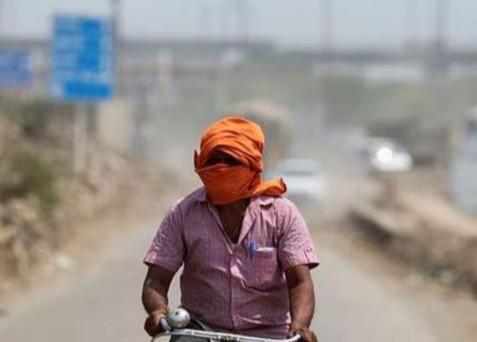
Extreme Heat Endangering Health & Productivity of Workers: Report
As the mercury rises, so do the concerns about the impact of extreme heat on the health and productivity of workers worldwide. A recent report by the World Health Organisation (WHO) and the World Meteorological Organisation (WMO) has sounded the alarm bells, highlighting the alarming effects of heat on workers, particularly in developing countries.
The report reveals that worker productivity drops by 2-3% for every degree above 20°C, leading to significant losses in economic output. This is a stark reminder of the need to take immediate action to protect workers from the ravages of extreme heat.
Manual workers in agriculture, construction, and other sectors are particularly vulnerable to the heat, as they are often exposed to the elements for extended periods. Additionally, vulnerable populations like children and the elderly are also at risk, as they may not have the same level of physical resilience as others.
The health risks associated with extreme heat are equally alarming. Heatstroke, dehydration, and kidney dysfunction are just a few of the potential consequences of prolonged exposure to high temperatures. In severe cases, heat-related illnesses can even be life-threatening.
The report highlights the need for employers, governments, and individuals to take proactive steps to mitigate the effects of extreme heat. This includes providing adequate breaks, ensuring access to clean drinking water, and implementing heat stress prevention measures.
One of the most critical steps is to create a heat-aware workplace culture. This involves educating workers about the risks associated with extreme heat, as well as providing them with the tools and resources they need to stay safe.
Employers can also play a crucial role in protecting workers by implementing heat-related policies and procedures. This includes scheduling work to avoid peak heat hours, providing cooling measures such as fans and air conditioning, and allowing workers to take regular breaks in shaded or air-conditioned areas.
In addition to these measures, governments can also play a key role in protecting workers from extreme heat. This includes developing and implementing heat-related policies and regulations, as well as providing resources and support to vulnerable populations.
Individuals can also take steps to protect themselves from extreme heat. This includes staying hydrated by drinking plenty of water, taking regular breaks in shaded or air-conditioned areas, and avoiding strenuous activities during peak heat hours.
The WHO and WMO report highlights the urgent need for action to protect workers from the effects of extreme heat. As the global temperature continues to rise, it is essential that we take proactive steps to mitigate the risks associated with heat stress.
In conclusion, the report by the WHO and WMO is a wake-up call for employers, governments, and individuals to take immediate action to protect workers from the health and productivity impacts of extreme heat. By implementing heat-related policies and procedures, creating a heat-aware workplace culture, and providing resources and support to vulnerable populations, we can reduce the risks associated with extreme heat and ensure a safer and more productive work environment for all.
Source: https://repository.inshorts.com/articles/en/PTI/45d9bd2d-ff57-417c-9e5f-831344bb34b0






